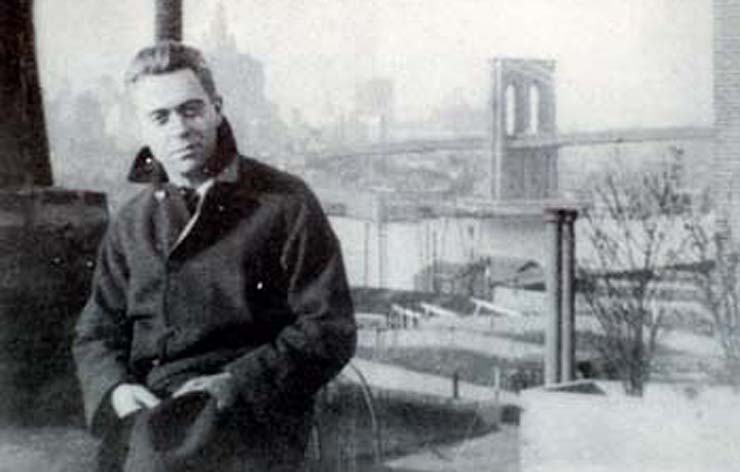HART CRANE – American poet, born (d: 1932). Crane’s father, Clarence, was a successful Ohio businessman who had made his fortune in the candy business by inventing the Life Saver (an odd foreshadowing of the poet’s death, ironically). Crane was Gay and associated his sexuality with his vocation as a poet. Raised in the Christian Science tradition of his mother, he never ceased to view himself as a outsider in relation to society. However, as poems such as “Repose of Rivers” make clear, he felt that this sense of alienation was necessary for him to attain the visionary insight that formed the basis for his poetic work. It is one of the classic Gay Archetypes.
Throughout the early 1920s, small but well-respected literary magazines published some of Crane’s lyrics, gaining him, among the avant-garde, a respect that White Buildings (1926), his first volume, ratified and strengthened. White Buildings contains many of Crane’s best lyrics, including “For the Marriage of Faustus and Helen,” and a powerful sequence of erotic poems called “Voyages,” written while he was falling in love with Emil Opffer, a Danish merchant marine.
Faustus and Helen was part of a larger artistic struggle to meet the modern world with something more than despair. Crane identified T.S. Eliot with that kind of despair, and while he acknowledged the greatness of The Waste Land, he also said it was “so damned dead,” an impasse, and a refusal to see “certain spiritual events and possibilities.” Crane’s self-appointed work would be to bring those spiritual events and possibilities to poetic life, and so create “a mystical synthesis of America.” He meant an epic poem.
This ambition would finally issue in The Bridge (1930), where the Brooklyn Bridge is both the poem’s central symbol and its poetic starting point.
Just before noon on April 27, 1932, on a steamship passage back to New York from Mexico — right after he was reportedly beaten for making sexual advances to a male crew member — he committed suicide by jumping into the Gulf of Mexico. Although he had been drinking heavily and left no suicide note, witnesses believed Crane’s intentions to be suicidal, as several reported that he exclaimed “Goodbye, everybody!” before throwing himself overboard. His body was never recovered.
A marker on his father’s tombstone in Garrettsville includes the inscription, “Harold Hart Crane 1899-1932 LOST AT SEA” (“Voyager,” John Unterecker, 1969). Crane’s suicide inspired several works of art by noted artist Jasper Johns, including “Periscope” and “Diver.” Hart Crane: Complete Poems & Selected Letters (Langdon Hammer, ed.)
